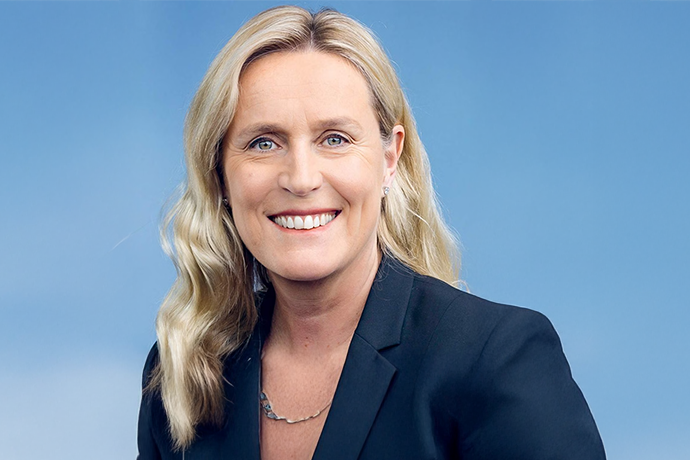 SPEAKERS
SPEAKERS
 TOPICS
TOPICS
Behavioral science, statistics, and practical activities fit together in evidence-based approaches to inclusive leadership. Learn how to reduce gender bias, apply behavioral economics, and lead with fairness, using proven tips from experts in nudge leadership and organizational culture.

Everybody in business is obsessed with innovation, agility, and change. In the recent past, the word inclusion has become the center of focus. Inclusive leadership is not a nifty soft skill anymore. It is a corporate necessity. Firms that make it a priority do not simply check a box, but in fact receive real returns in the form of increased employee engagement, a more robust innovation pipeline, and even financial performance.
Good intentions alone are not enough. Humans are complex, and systems are rarely simple. Bias, especially gender bias in the workplace, often hides in plain sight, embedded in processes that seem neutral on the surface. This is where evidence-based leadership comes in: a combination of behavioral science, scientific data, and actionable strategies that deliver results.
Imagine yourself going through job applications for a high-profile marketing position. There are two similar personalities with regard to qualifications. One of them has a name that you immediately relate to a particular gender. You know less about the name of the other. Unconsciously, your head may also start making assumptions: leadership style, work ethic, even cultural fit, only based on those few letters.
This is casual discrimination, which everyone exhibits. It doesn’t make someone a bad person; it’s simply human. To be efficient in handling knowledge, our brains find shortcuts to process it quickly because it will help in survival, but it is dangerous when decisions about individuals are concerned.
Studies repeatedly confirm that gender bias in the workplace doesn’t only occur during hiring. It affects performance appraisals, promotions, pay increments, and even who hears whose ideas in meetings.

What can we do to get a system going without relying on the self-control of all? An answer is found in behavioral economics: the financial science of how people actually make decisions. The idea of nudge leadership is simple: instead of telling people to “be less biased,” rebuild settings so the easy option is the fair one.
Think about the hiring process of a company. Names and pictures of candidates are concealed in the initial screening. Or imagine performance reviews when managers had to employ a strictly outlined level of scoring, not leave loose notes. Such minor adjustments will not change the minds of people overnight, but they prevent bias from creeping through.
Few people speak about these principles with such clarity as Iris Bohnet. A behavioral economist and professor at Harvard, she wrote Gender Equality by Design.
Bohnet pays attention to the redesign of the structure of the decision-making process, requesting the standardized questions during interviews, the regularization of interviewing panels, and an audit of the promotion data on a regular basis. They do not require much additional time or funds, but these measures change outcomes annually.
It is all good to understand what needs to be done, and another thing to actually do it. The leaders begin with enthusiasm, but old habits can get them back to where they started. The only next step would be conceptualizing inclusion as a continuous activity, rather than a project.
In the long run, these repetitive behaviors transform a firm into one that is proactive in fairness.
Three common real-life examples are as follows:
These motions alone are not much, but combined, they transform the daily experience within the workplace.

Firms such as Speaker Agency can be resorted to by companies. These networks help companies in contact with top intellectuals, trainers, and keynote speakers who are experts in the field of gender equality in the workplace, adapting strategies to the culture and challenges of each organization. One of the sessions could be devoted to behavioral economics and decision design, and another one could be created around leadership accountability and the stories that motivate others to accept change.
Diversity and inclusion program initiatives will fail where leaders delegate the same to HR. The employees observe the top and imitate them. When the CEO and senior managers openly participate in the effort by making decisions that are consistent with their statements, others will also. Gender Equality Speakers. Professionals in that place can convert good intentions into actual change. To find additional strategies, tools, and research, visit Gender Equality Speakers.

This corporation anonymizes resumes at the initial phases of hiring. They hired 38 percent additional women in technical jobs within 12 months, without compromising on the qualifications.
This bank increased the representation of women by 25 percent among the senior management in two years by establishing a structured set of evaluation criteria for promotions.
The Speaker Agency’s motivational programs helped this retailer increase supplier diversity and enhance engagement scores among front-end employees.
Inclusive leadership is never over. Cultures change, teams change, and new bias appear every day. The dedication should be continuous, inspired by the feeling of curiosity and humility.
Consider a healthy lifestyle: three months at the gym do not guarantee lasting fitness. Consistency is key. The same applies to creating a work environment in which equality is threaded throughout the decision-making process.
Organizations with the ability to look beyond their blind spots are the future. Evidence-based practices provide leaders with the means of destroying bias, not in terms of a slogan but through organization. Using behavioral economics with practical nudges and measuring consistently, companies will be able to establish contexts that give everyone a decent chance to succeed.
And perhaps most crucially, they can be a role model of the type of world we all want to work in.